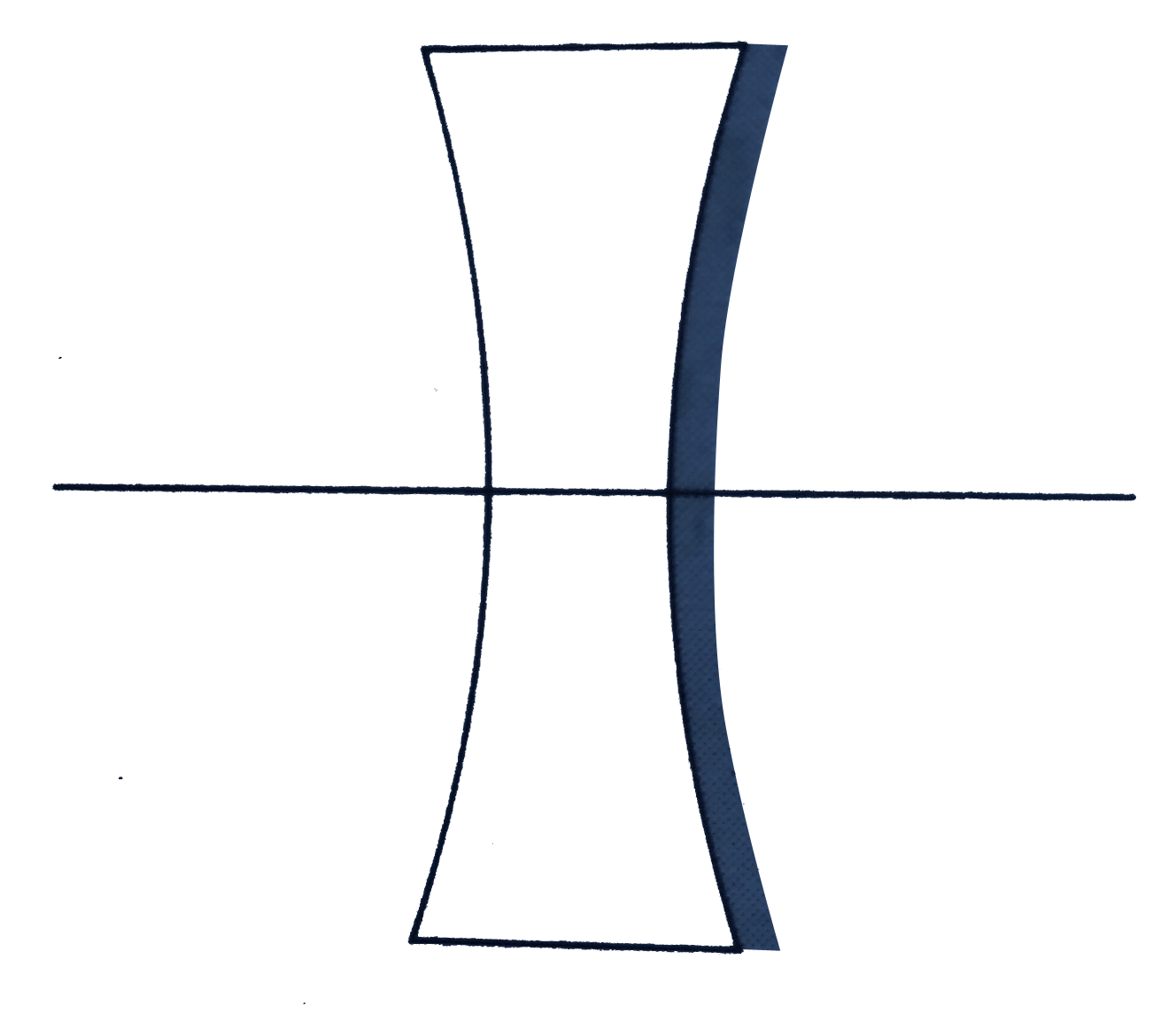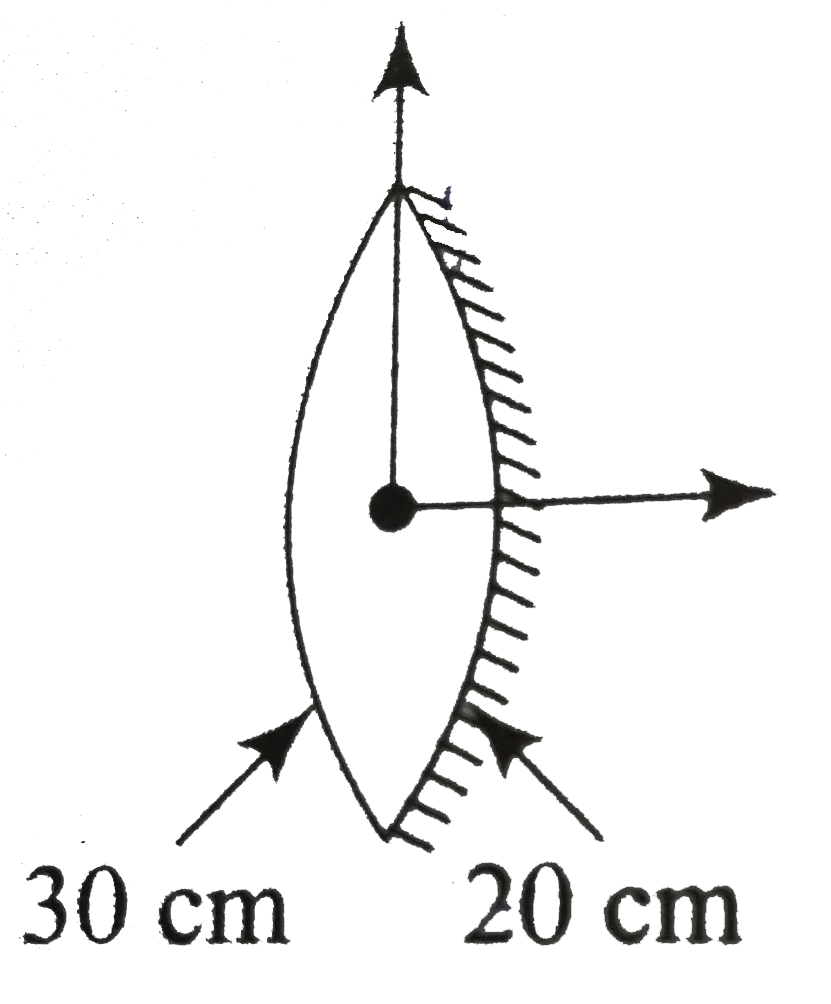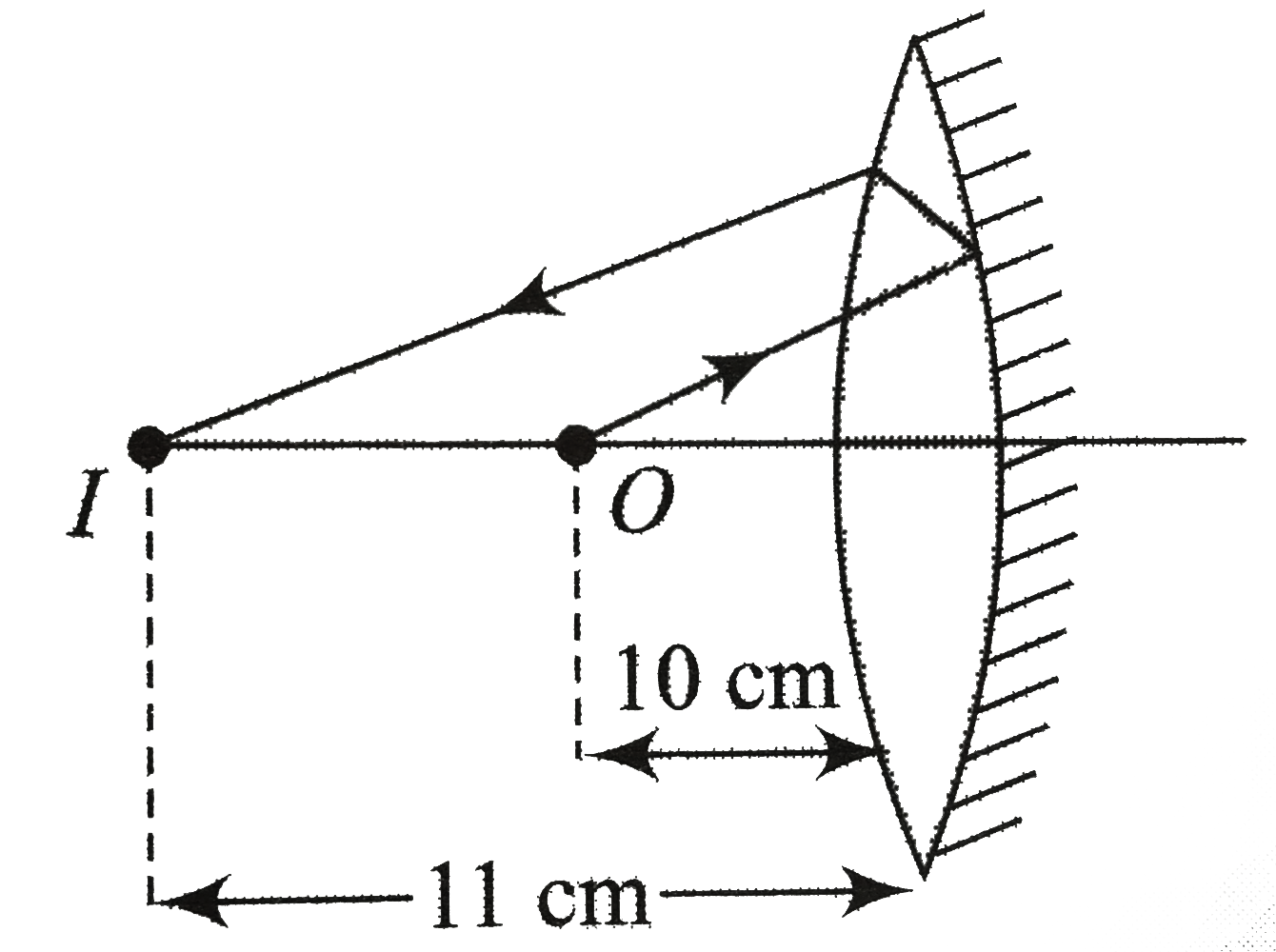An object in placed 30cm in front of a concave lens that is made of a glass of refractive index 1.5 and has equal radii of curvature of its two surfaces, each 30 cm. The surface of the lens farther away from the object is silvered. Find the nature and position of the final image.
Focal length of the concave lens, using the lensmaker's formula, is
1fL=(1.5−1)(−130−130)[R1=−30cm,R2=30cm]
fL=−30cm=−0.3m
In a silvered lens, light as it enters the lens suffers refraction, then it gets reflected at the silvered surface, and again undergoes refraction as it comes out in air.
In such a situation, power of the silvered lens will be
P=PL+PM=2PL+PM
PL=1fL=−10.3D
PM=−1fM=−10.15D
[ Silvered surface behaves as a spherical convex mirror of radius of curvature 30 cm so that focal length will be 15cm=0.15m]
P=2PL+PM=−20.3−11.5=−13.33D
And focal length of the equivalent mirror,
F=−1P−1−13.33=0.075m=7.5mm.
i.e., the silvered lens behaves as a convex mirror of focal length 7.5cm.
For an object placed at a distance of 30 cm from the silvered lens, which behaves as a convex mirror of focal length 7.5cm,
u=−30cm and f=7.5cm
1v+1u=1f⇒1v−130=17.5
1v−17.5+130
⇒v=6cm
i.e., the image will be 6cm to the right of the silvered lens and it will be a virtual image [ silvered lens behaves as a convex mirror ] .

Topper's Solved these Questions
- BOOK - CENGAGE PHYSICSCHAPTER - GEOMETRICAL OPTICSEXERCISE - Solved Examples15videos
GEOMETRICAL OPTICS
- BOOK - CENGAGE PHYSICSCHAPTER - GEOMETRICAL OPTICSEXERCISE - Exercise1.114videos
GEOMETRICAL OPTICS
- BOOK - CENGAGE PHYSICSCHAPTER - FRICTIONEXERCISE - QUESTION BANK1videos
FRICTION
- BOOK - CENGAGE PHYSICSCHAPTER - GRAVITATIONEXERCISE - Question Bank39videos
GRAVITATION
Similar Questions
A biconvex lens is made of glass with refractive index 1.5 and has radii of curvature 20 cm and 30 cm. If the 20 cm surface is silvered, what is the effective focal length of the mirror formed?
 View Solution
View SolutionA double convex lens made of glass refractive index 1.6 has its both surfaces of equal radii of curvature of 30 cm each. An object of 5 cm height is placed at a distance of 12.5 cm from the lens. Find the position, nature and size of the image.
View Solution
Knowledge Check
- Question 1 - Select One
A plano-concave lens is made of glass of refractive index 1.5 and the radius of curvature of its curved face is 100 cm. What is the power of the lens?
A+0.5DB−0.5DC−2DD+2D - Question 2 - Select One
A plano-convex lens is made of glass of refractive index 1.6. the radius of curvature of its curved surface is 30 cm. What is the focal length of the lens ?
A50 cmB75 cmC100 cmD150 cm - Question 3 - Select One
A concavo-convex lens is made of glass of refractive index 1.5. The radii of curvature of its two surfaces are 30cm and 50cm. Its focal length when placed in a liquid of refractive index 1.4 is
A200cmB500cmC800cmD1050cm
A pin is placed 10cm in front of a convex lens of focal length 20cm, made of a material having refractive index 1.5 . The surface of lens farther away from the pin is silvered and has a radius of curvature 22cm. Determine the position of the final image. Is the image real or virtual?
 View Solution
View SolutionA double convex lens made of glass of refractive index 1.56 has both radii of curvature of magnitude 20cm. If an object is placed at a distance of 10cm from this lens, find the position of image formed.
View SolutionAn object is placed in front of a symmetrical convex lens with refractive index1.2and radius of curvature 40cm.the surface of the lens further away from the object is silvered.Under auto-collimation condition is ,the obejct distance is
View SolutionA double convex lens is made of glass of refractive index 1.5. If its focal length is 30 cm, then radius of curvature of each of its curved surface is
View SolutionA point object is placed in air at a distance of 40 cm from a concave refracting surface of refractive index 1.5. If the radius of curvature of the surface is 20 cm, then the position of the image is –
View Solution

